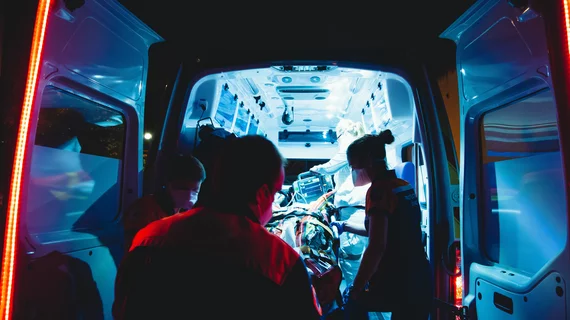Emergency overreads change care for 92% of patients with discrepant outside reports
When emergency radiologists overread interpretations of critically ill transfer patients, they discover discrepancies in fewer than 15% of cases. However, more than 90% of these second opinions produce a change in patient care or follow-up.
So found ED radiologists at the University of Washington in Seattle when they tracked records of more than 5,800 patients transferred to their Level 1 trauma center at UW Medicine throughout a single calendar year.
In the study report, published online Aug. 13 in JACR [1], corresponding author Jeffrey Robinson, MD, MBA, and colleagues suggest their findings warrant broad attention for two key reasons.
First, their study is the first they know of to analyze the clinical impact of ED overreads.
Second, the high rate of change in care pathways they uncovered “confirms the relevance of radiology overreads by emergency medicine physicians, who act on these reports.”
All Referral Centers Grapple with Prior Diagnostics, But the Heat is Always On in Emergency Medicine
The team was facilitated in the project by their department’s policy of routinely overreading advanced-imaging exams of every patient transferred to UW Medicine for emergency care. As the ED radiologists perform second reads of CT and MRI studies, software electronically flags discrepancies with radiology reports filed at sending sites.
Along with the findings on rates of discrepant interpretations (669 of 5,834 overreads [12%]) and changes in patient management (613 of 669 [92%]), the authors report that ED management was changed by discrepancies noted on the final report in 33% of cases.
Meanwhile ED stay was extended in some 81% of cases and selection of consulting services in 61%, while patient disposition was affected 13% of the time and outpatient follow-up in 8%.
In their discussion, Robinson and co-authors point out that managing exams conducted and interpreted from sending care sites is a common challenge for all referral centers.
The issue is especially pressing in an emergency setting—as compared with a tumor board, for example—because a patient’s primary diagnosis “may be in doubt, and changes in interpretation significantly affect management.”
‘Worth the Effort to Routinely Overread CT and MRI Exams’
In the present study, even when emergency radiologists encountered no discrepant findings in their overreads, the second look “often provided additional information to the emergency provider,” the authors write, “synthesizing findings into injury patterns that may have altered patient care (such as identifying flail chest from ‘multiple rib fractures’ or correctly classifying a solid organ injury to manage admission to the ICU).”
The realized added value is “worth the effort to design workflows to routinely overread CT and MRI exams of emergently transferred patients,” Robinson and co-authors conclude.
More:
The culture of both the emergency department and radiology department must evolve to the point where the overreading of outside exams is expected, and not an imposition. The perception that these overreads are not reimbursed is pervasive and is the subject of further investigation.”

